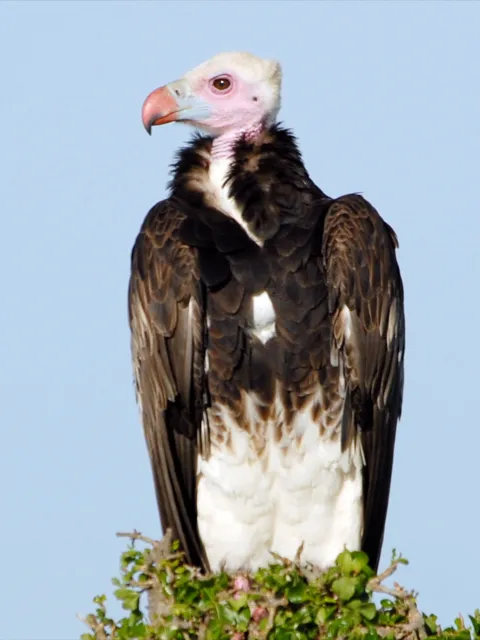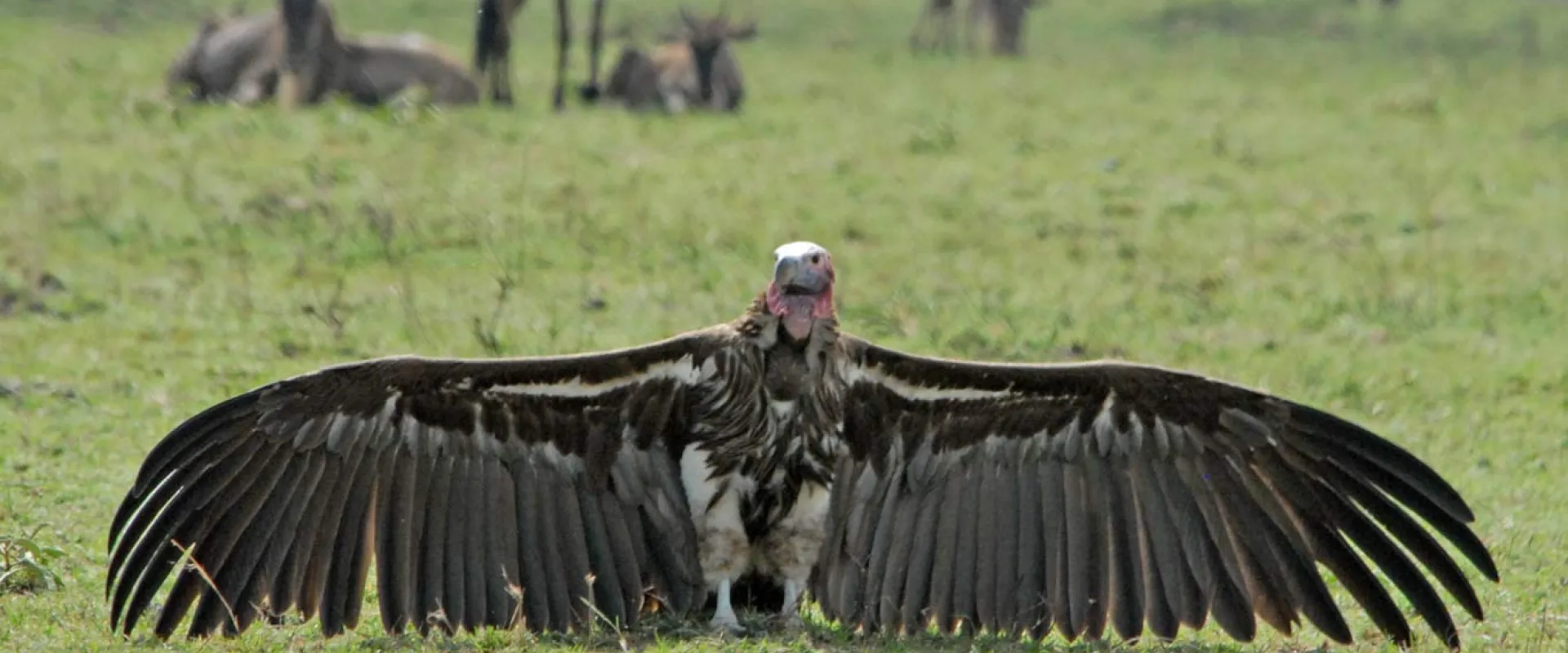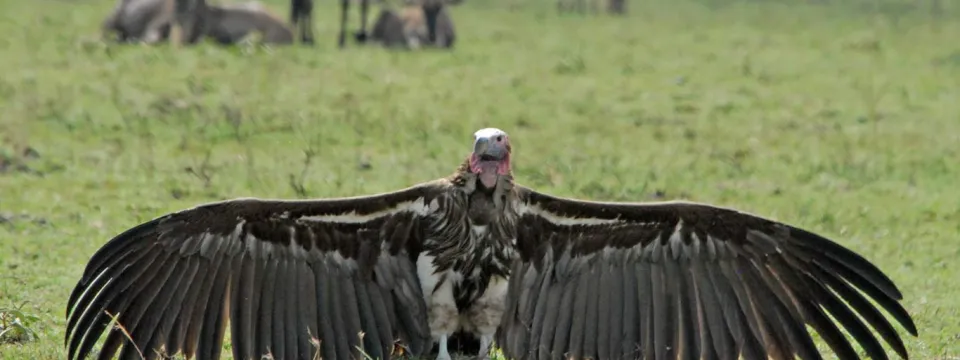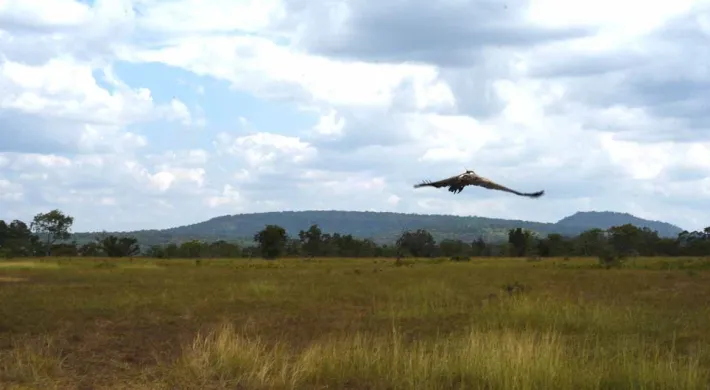Corinne Kendall, Curator of Conservation and Research for the North Carolina Zoo
Catch a Vulture by the Toe Series: Part 4
Vultures tend to be portrayed as large, brown birds with long necks, beady eyes, and big red feet. They all sit in groups in a tree or on the ground waiting eagerly for something to die. But the truth is, not all vultures look alike. In fact, there are 22 different species of vultures and even in the savannahs of Tanzania where we work, we can expect to see at least four and sometimes even five or six different vulture species not only in the same ecosystem but feeding at the same dead animal. For this year’s International Vulture Awareness Day - September 5 - I want to celebrate the incredible diversity of vultures

Vultures vary considerably in their size and appearance. Our native Turkey vultures, which you can see frequently overhead in North Carolina, are on the smaller size, weighing about 3 lbs. Cape vultures, on the other hand, found in southern Africa can be over 20 lbs, that’s probably a bit bigger than your Thanksgiving turkey. While some vultures are bland-looking brown birds with long necks as they are so often depicted, others are beautiful with exceptionally bright colors – like the White-headed vulture with snowy white feathers covering its head and blue and pink feathers along its eyes and beak.
Image: White-headed vulture
Many vultures species are gregarious, like Black vultures, which you might see in large groups feeding on roadkill in the United States, but others tend to occur alone or in pairs, like Lappet-faced vultures of the Tanzanian savannah.
While all vultures eat at least some dead stuff, their diet can vary quite a bit. Palmnut vultures found throughout much of Africa eat just that palm nuts – the fruit of palm (think coconut) trees, as well as fish and other fruits. California condors historically would have fed primarily on dead marine mammals, like whales and sea lions. Turkey and black vultures eat roadkill like deer, but can also feed at dumps. Hooded vultures even eat feces or poop, mostly of carnivores, like lions. What I find most fascinating about vultures is that even though several different types might all be eating at the dead animal, even within a carcass, vultures can specialize.
In fact, we need the diversity of vultures within an ecosystem to help completely break down the carrion. In Tanzania and Kenya, where I have spent the most time watching vultures feed, there are three main roles that vultures play in consuming a dead animal. There are the rippers and tearers – the Lappet-faced and White-headed vultures.
Above: Lappet-faced vulture
These are large vultures with even larger beaks. I once struggled to get my hand around the back of the head of a Lappet-faced vulture his skull was so wide. These birds can rip through tough outer skin of a buffalo and can break the ribs off of an impala carcass. I’ve even seen one fracture a goat skull in two! These species are critical for eating all the tough tissues – the cartilage and skin that other species might not be able to consume. Then there are the pullers or slurpers – the Ruppell’s vulture or White-backed vulture. These social birds feed in large groups, can eat nearly 2 lbs of meat in one sitting, and are probably the fastest eaters on the savannah. They have long necks and serrated tongues so that they can literally suck the soft tissues, like organs, out of a carcass. They eat the bulk of the meat on any given animal and are fierce competitors. Finally, there are the peckers – the Hooded vulture for instance. These small vultures haphazardly wander around a carcass looking for tasty morsel that another bird might have left behind. Their diminutive beaks delicately reach into tiny crevices in the skull or along a leg bone where these gentle birds pull off the last remaining tidbits that would otherwise go to insects like maggots (i.e. fly larvae).
Its only with the full suite of species that a dead animal goes from large hulking body to bare bones in a matter of hours. Vultures have a big job to do and they do it best when they work as a team, each with their own special function. So the diversity of vultures doesn’t just make them fascinating, it makes them the truly efficient scavengers that they are.




